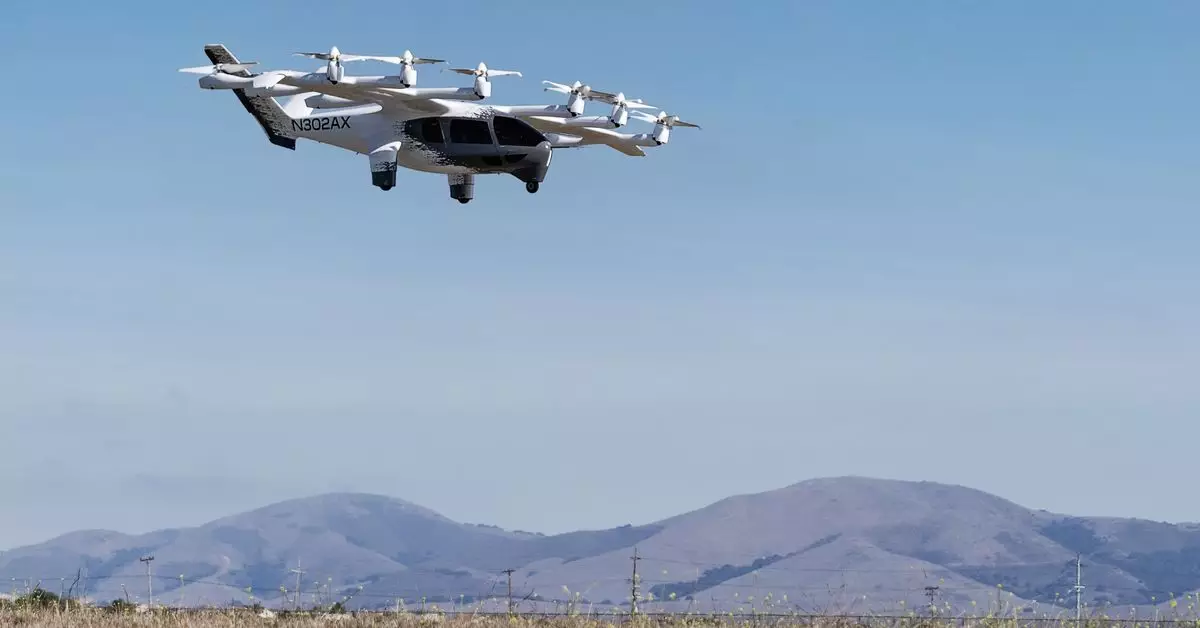Archer Aviation is poised to revolutionize the aviation sector, particularly within military applications, thanks to its recent strategic collaborations and substantial funding rounds. As electric vertical takeoff and landing (eVTOL) technology gains traction, Archer’s pivotal alliances signal a moving landscape for both commercial and defense industries.
One of Archer’s most significant developments is its exclusive partnership with Anduril Industries, a defense technology firm founded by Palmer Luckey. This collaboration reflects a potent fusion of electric aviation and military innovation, as both entities aim to develop next-generation aircraft tailored for defense. With the military increasingly leaning toward high-tech solutions, Archer’s proposal for a hybrid propulsion VTOL aircraft may well align with the U.S. Department of Defense’s objectives.
Archer intends to use this aircraft as a bedrock for securing contracts with the DOD. By establishing an internal division named Archer Defense, the company indicates that it is not merely a participant but rather a formidable player within the military-industrial complex. This pivot could significantly alter the landscape of military transport and surveillance by introducing more efficient, environmentally friendly options to the armed forces.
Archer’s ambitions are buoyed by impressive financial backing, most notably a recent funding round in which it raised $450 million. Pre-existing investors such as Stellantis and United Airlines, alongside new stakeholders like Wellington Management and Abu Dhabi’s 2PointZero, contribute to an impressive total of around $2 billion in funding since the company’s inception. This capital will be instrumental in propelling Archer’s plans, from enhancing eVTOL technology to executing its defense projects.
The financial landscape of electric aviation is characterized by volatility, with several eVTOL companies facing challenges. For instance, while Archer is advancing, other competitors such as Lilium have encountered severe setbacks, indicating that the road ahead, though fruitful for some, is fraught with uncertainty.
As Archer navigates the intricate process of certification with the Federal Aviation Administration (FAA), its proactive stance underscores a critical intersection of technological advancement and regulatory compliance. Recent FAA regulations concerning eVTOL vehicles are a game-changer, providing a clearer framework for the operation of these aircraft. For Archer, conformity with these guidelines is essential, not only for military contracts but also for eventual commercial rollout.
Archer has welcomed the new regulations, emphasizing their pivotal role in ensuring the safe integration of eVTOL technology into U.S. airspace. This regulatory clarity is not just a hurdle to overcome; it is a cornerstone for developers aiming to provide the public with a new mode of transportation.
Broader Industry Context and Competitive Landscape
Archer’s developments occur within a broader ecosystem where several players, such as Joby Aviation and Volocopter, are keen on making their mark. While Archer and others await FAA approvals, the competition remains fierce. Companies have invested heavily in R&D to capture a share of the air taxi market, which is often mistakenly referred to as flying cars. Despite the narrative, eVTOL technology embodies more than just novelty; it represents a significant innovation in urban transportation.
However, the landscape is not entirely optimistic. Alongside the adventurous spirit of innovation, some companies like Lilium are facing dire financial hurdles that might jeopardize their existence. This juxtaposition highlights the fragility of the burgeoning industry where some firms ascend rapidly, while others fall short, creating an unpredictable environment for investors and stakeholders alike.
The anticipation surrounding Archer Aviation’s endeavors serves as a reminder of the broader potential of electric aviation. As technological barriers dissipate and regulatory frameworks evolve, the dream of sustainable air travel is inching closer to reality. Archer’s endeavors within the military domain may not only fulfill defense needs but can also pave the way for more widespread civilian applications.
Ultimately, Archer Aviation represents a strategic convergence of technology, military needs, and environmental imperatives. As the electric aviation sector evolves, the company’s role could be pivotal in defining what the future of air travel will look like—not just in terms of technology but in how society views the integration of advanced machinery into everyday life.

